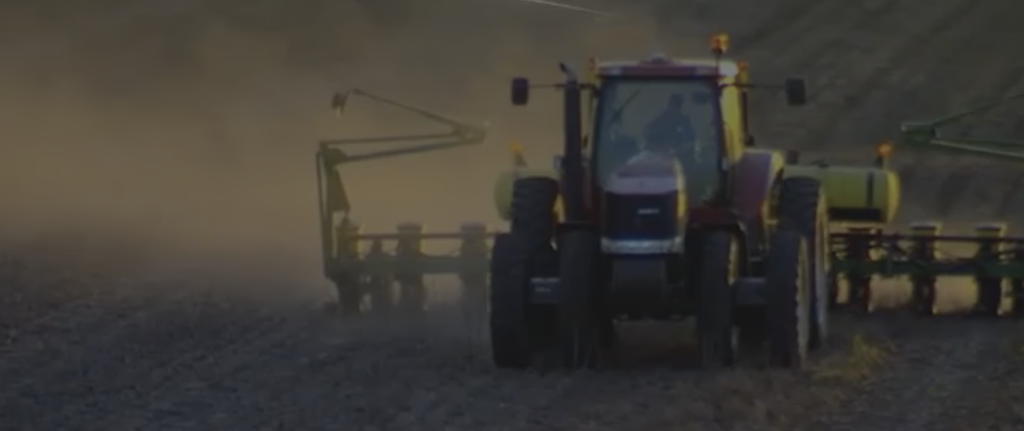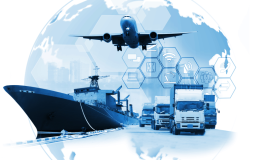Connected cars, smarter homes, and cities– the IoT (Internet of Things) has transformed our lives in many ways. The concept has enhanced our comforts through automation. Though various industry sectors have started leveraging the benefits of IoT, the agriculture sector is yet to avail its full potential. Many scopes for utilizing IoT remain unexplored in this sector, and smart farming is in the nascent stage.
Importance of Agriculture 2.0
Rapid growth in population, rising resource constraints, and rapid changes in climate are a few stumbling blocks to farmers. As per the estimate of the Food and Agriculture Organization (FAO), global food production needs to be risen by 70 percent to feed additional 2.3 billion people by 2050.
Efficient management, optimized use of seeds and fertilizers along with precise and continuous monitoring can make this task achievable. Today, farmers in developing regions with a small-scale land account for almost 4/5 of total agricultural production. If they get the right and real-time information, they can increase the production through taking informed farming decisions. There, Agriculture 2.0 becomes a necessity.
Enter IoT. The internet-enabled objects and sensors can be deployed anywhere to gather data on moisture level and crop health. The farmers can readily access the stored data through their tablets and mobile phones. They can also select between manual and automated options for taking necessary actions based on this data. For example, if the soil moisture level decreases, the farmer can deploy sensors to start the irrigation. Now, this is what we call a smart farming.
How do Smart Farming solutions work?
Smart farming solutions work through sensors. Farmers can monitor various conditions like soil moisture, water level, light, humidity, obstacles, and motion from anywhere by combining sensors, motion detectors, button camera, and wearable devices. The IoT-based smart farming automates the irrigation system and is highly efficient as compared to the conventional operations.
It is easy to follow the trends in organic farming, family farming, etc. With the help of IoT-based farming applications.
Major IoT applications for farming are farm vehicle tracking, livestock monitoring, water level monitoring, storage and soil monitoring, etc.
Let’s elaborate a few of the applications that can revolutionize the agriculture sector:
Plant and Soil Monitoring
It is difficult to obtain the data of the farmlands with the size of hundreds of thousands of square yards. The conventional method is to take samples from different parts to check the fertility, moisture content, and chemical composition. But, the sampling method is not much accurate because the level and chemical composition tend to change from one to another location.
With IoT, there is no room for the guesswork in farming. The soil sensors, which are at uniform distances across the farmland, can alert farmer to any irregular conditions like high acidity or low moisture. The farmers can get an accurate soil data either by the dashboard or a customized mobile application.
Monitoring of plant and soil can lead to higher RoI for farmers. As a part of precision farming, the soil and plant monitoring include the following aspects:
- Moisture and nutrients monitoring
- Water usage monitoring for optimal plant growth
- Fertilization and chemical composition monitoring
- Weather condition reporting
- Deciding the crop get the optimal yield
In brief, precision farming or precision agriculture is one of the most popular applications of IoT because of its plethora of benefits. The precision farming apps serve many objectives ranging from managing irrigation and fertilization to providing support to local agronomy as per different seasons.
Use of Drones and AI
Farming or agricultural drones have started gaining ground as they can perform a variety of tasks. Be it sprinkling pesticides, capturing farm photos using GPS technology, or giving inputs about water and fertilizers level; drones can do them with ease. Drones can improve the agricultural practices in the domains of crop health assessment, irrigation, soil, and field analysis.
As per the estimate of Grand View Research, the market size for these agricultural drones to exceed USD 3770 million by 2024. These drones are easy to control. Any person can control them either manually or by using on-ground IoT sensors. The drones sent collected data to servers or systems from where the end user can get them. In brief, the drone technology offers the real-time data and revamps the agriculture industry.
Apart from drones, self-driving tractors are also available that farmers can control remotely and save the labor costs.
Livestock Monitoring
Ranchers can monitor their cattle with ease thanks to livestock sensors. These sensors notify ranchers when animals roam around in the field so that the ranchers can trace their location with ease.
The livestock monitoring also enables ranchers to get data regarding the health of their cattle. It can assist ranchers in two ways:
- Identification of sick animals-It allows ranchers to separate the sick animals from the herd, thereby preventing the spread of disease.
- Location Tracing- It saves the rancher’s time and labor cost because there is no need to follow the herd every time.
However, it is difficult to insert sensors among livestock. Apart from a collar, a wireless retrofitted bolus is useful. It can communicate via Bluetooth.
Remote Weather Monitoring
One of the most challenging factors for the farmers is the weather. Farmers need to measure the key conditions like temperature, rainfall, humidity, moisture, and chemical composition accurately to get more crop throughout the year. Today, umpteen number of customizable sensors are available to assist farmers in monitoring their crops and the weather conditions from remote places.
These sensors eliminate the requirement for farmers to present physically at the farm. In a way, sensors can multiply the productivity and farmers can get more agricultural output without putting additional efforts.
What do engineers need to take care of while developing smart farming solutions?
There are many use cases for agricultural use of IoT depending on the farmer’s requirements. Engineers need to keep specific issues related to farming and livestock in mind while developing the smart farming solutions. Here is a brief account of five such aspects:
- Purpose
What the end user wants to monitor should be at the center when the IoT app developers build an app. For example, if the end user is a corn farmer, he is concerned with water usage mainly. He wants to make sure that water is not wasted while the crop gets enough water. There, water level and moisture monitoring sensors are helpful. In other words, type of sensors depends on the purpose of IoT solution.
- Technology
When it comes to farming solutions, distance plays a vital role in selecting the technology. This is because the sensors gather data and send the same to the server. We cannot use the same technology for measuring something in 10 meters and 1500 meters area. For example, NFC (Near Field Communication) or RFID (Radio Frequency Identification) works best if we want to find how many pounds of soybeans are there in each feedbag. But, if we want to send data over hundreds of thousands of meters, LPWAN (Low Power, Wide Area Network) is a good option.
- Power Requirements
Engineers tend to save costs and power in the customized IoT-based farming solutions. Therefore, they often make applications that send data less frequently. As most of IoT solutions are spread across a wide farm, it is better to come up with a low power application. More data transmission will translate into more data costs and power consumption. This is important factor developers need to consider for developing cost-effective IoT solutions for farmers.
- Data Frequency
The end user’s requirements are also critical to deciding the number of integrated data packets in a sensor. For example, a potato field’s farmer does not require moisture-related information every two seconds. But, if a developer makes an IoT application for an automatic tractor, it requires GPS and other information on a continual and real-time basis.In this case, the data frequency is very high.
Both the examples clearly point out the difference between high and low data frequency.
- Placement of Sensors
Another challenge for the engineers is to place the sensors in a way that they can give an optimal performance. For example, they need to take more care while mounting antennae in an orange orchard than a strawberry field. Even if the farming solution has all necessary sensors, the proper placement is necessary to get all the benefits.
Wrapping Up
As per Machina Research Report, the number of connected devices in the agriculture sector is expected to reach 225 million by 2024. Globally, the farmers have started to realize that the IoT is can be a driving force for increasing agricultural production in a cost-effective way.
All the developing countries, where farming is done in a dispersed and unorganized way, IoT can offer a great help. However, it is fair to mention that engineers should understand the needs of the end user before developing the smart farming solutions.


















